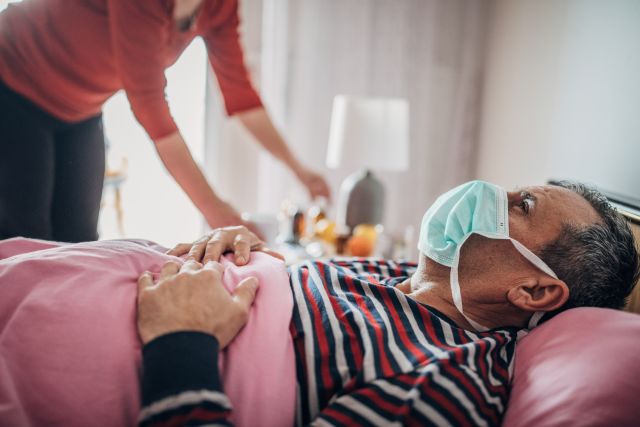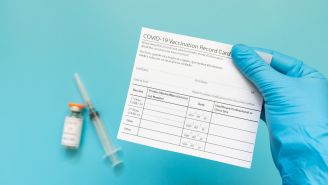Updated on October 8, 2020.
COVID-19 is often associated with fever, cough, fatigue and other general signs of a respiratory infection. But as doctors learn more about this disease, it’s become clear that it affects more than just the lungs. COVID-19 can also cause damage to the heart, brain, kidneys and other organs.
More severe infections may trigger serious and potentially life-threatening symptoms. Serious infection can develop slowly, but sometimes it happens very quickly. Red flags may include:
- Extreme difficulty breathing (such as gasping for air, being unable to talk without feeling out of breath, severe wheezing)
- Persistent pain or pressure in the chest
- New confusion or disorientation
- Bluish lips or face
- Signs of low blood pressure (too weak to stand, dizziness, lightheadedness, feeling cold, pale, clammy skin)
- Dehydration (dry lips and mouth, not urinating much, sunken eyes)
- New or worsening seizures
- Loss of consciousness or difficulty waking up or staying awake
If you are having an emergency, call 911 for help right away. It’s important to seek immediate medical attention if you develop any of these serious warning signs. Let the operator know that you have or think you may have COVID-19. If you are able, put on a face mask before help arrives.
Why some cases become life-threatening
Most people with COVID-19 won’t need emergency treatment. Only about 15 percent develop serious illness and need treatment in a hospital. About 5 percent of people must be admitted to an intensive care unit.
Severe coronavirus infections could lead to pneumonia. This occurs when the infection triggers inflammation in the lungs' air sacs (alveoli), causing them to fill up with fluid. When this happens, breathing becomes more difficult. People with pneumonia may also develop severe coughing along with fever and chills.
In extreme cases, COVID-19 can lead to acute respiratory distress syndrome (ARDS) and death from respiratory failure. Since the lungs aren’t working as well as they should, the amount of oxygen in the bloodstream drops. When the rest of the body isn’t getting the oxygen its needs, the brain, heart and other vital organs can be damaged or fail.
Treatments for patients with severe COVID-19 may include:
- Oxygen support, which can help the body get the oxygen it needs until the lungs are able to recover
- Remdesivir, an antiviral drug
- Corticosteroids, such as dexamethasone or hydrocortisone, which are used to suppress the immune system and ease inflammation, swelling and edema
- Convalescent plasma, SARS-CoV-2 antibodies collected from people who have recovered from COVID-19
- IV fluids, blood thinners and other medication to treat COVID-19-related complications
Monoclonal antibodies, laboratory-made versions of natural antibodies against SARS-CoV-2, are another experimental COVID-19 treatment still under investigation.
When in doubt, don’t delay care
Symptoms of COVID-19 may appear anywhere from 2 to 14 days after exposure to SARS-CoV-2.
If you believe you were exposed to COVID-19 or if you, or someone in your home, has symptoms consistent with a respiratory infection, take immediate steps to avoid spreading the illness to others.
This means wearing a face mask and keeping distance between yourself and the other people in your home.
If you have symptoms of COVID-19 that are not severe or life-threatening and do not require immediate medical attention, such as dry cough, fatigue, sore throat or new loss of sense of smell, call your healthcare provider (HCP) for instructions.
Do not go to your doctor’s office without calling ahead first and letting the office staff know that you suspect you’ve been exposed to COVID-19.
Your doctor should determine if you can be treated at home, and also advise if you should be tested for the coronavirus and where that should be done.





